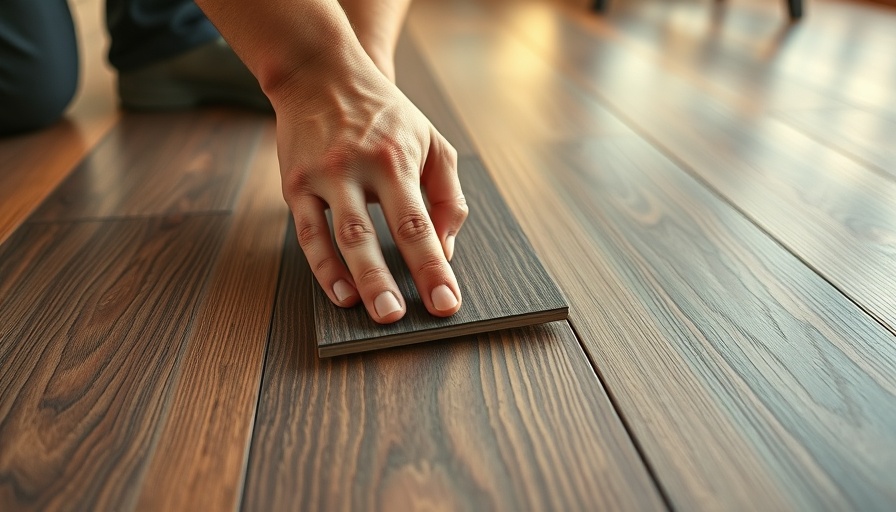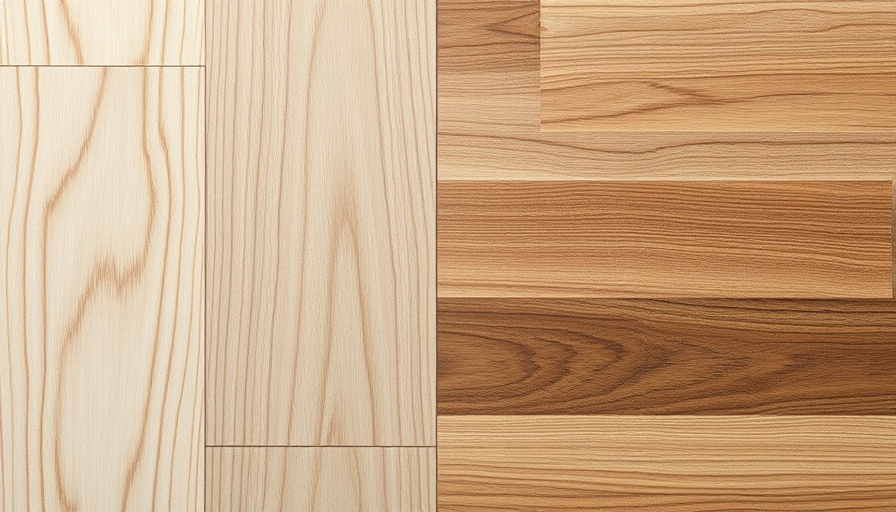
Understanding Laminate Flooring Durability
Laminate flooring is a popular choice for homeowners due to its affordability, versatility, and resilience. However, even the most durable flooring can suffer from wear and tear over time. Understanding the common types of damage and how they occur can empower you to take action before minor issues escalate into major repairs.
Common Types of Laminate Flooring Damage
Damage to laminate flooring can result from various causes, such as moisture exposure, scratches from sharp objects, or even heavy furniture that leaves indents. The good news is that many minor repairs can be done without professional help, allowing homeowners to maintain their floors' appearance and functionality with little investment.
The Power of DIY Repairs: Tools You’ll Need
Before diving into repairs, it’s essential to gather a few tools. A laminate flooring repair kit typically includes a repair marker, putty, and other essential items designed specifically for your flooring type. Selecting the right kit not only makes repairs easier but also ensures that the colors and textures match seamlessly with your existing floor.
Step-by-Step Guide to Repairing Minor Scratches
The beauty of laminate flooring is that minor scratches can often be concealed effectively. Here’s how:
- Clean the Area: Begin by removing dirt and debris using a damp cloth. A clean workspace ensures that any repairs you make will adhere properly.
- Utilize a Repair Marker: For small scratches, a repair marker can quickly restore the floor's surface. Apply it lightly and wait about 30 minutes for it to dry.
- Use Putty for Deep Scratches: Larger defects require more effort. Use putty to fill in the scratch, smoothing it with a putty knife. Allow it to dry completely before attempting to clean the area.
- Final Touch-Up: Once the putty has set, remove any mess and polish the area with a damp cloth to restore its shine.
Dealing with Water Damage: Prevention and Solutions
While laminate flooring is water-resistant, it isn’t entirely waterproof. Ignoring spills or prolonged exposure to moisture can lead to mold and damage. If you suspect water damage, it’s crucial to act quickly:
- Remove Moisture and Mold: Immediately clear any standing water with a mop or towel. Use a mixture of vinegar and water to eliminate any potential mold.
- Replace Damaged Planks: If a plank becomes unfixable due to extensive water damage, you’ll need to remove it. Ensure you install a new plank that matches the rest of your flooring.
Preventative Measures for Long-Term Maintenance
Maintaining your laminate floors can extend their life significantly. Place mats at entryways, avoid using vacuum cleaners with beater bars, and avoid dragging heavy furniture across the floor. Simple preventive measures ensure your floors remain in excellent condition for years.
Empowering Homeowners: The Benefits of DIY Repairs
Taking on laminate floor repairs by yourself not only saves money but also empowers you as a homeowner. Learning to handle these small tasks makes home maintenance less daunting and allows you to control the condition of your living spaces. Personally taking charge of home improvements fosters a deeper connection to your space, enhancing your overall sense of well-being and pride in your home.
Take Action and Transform Your Home
Your home is your sanctuary, and keeping it in top shape reflects your style and care for your living environment. With a few simple tools and the right guidance, you can repair your laminate flooring and maintain its beauty for years to come. Embrace the DIY spirit and take your home improvement journey into your hands!
 Add Row
Add Row  Add
Add 




Write A Comment